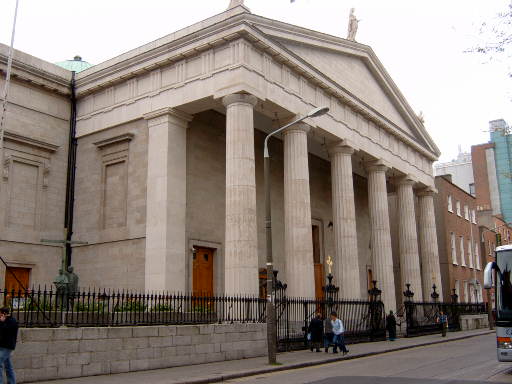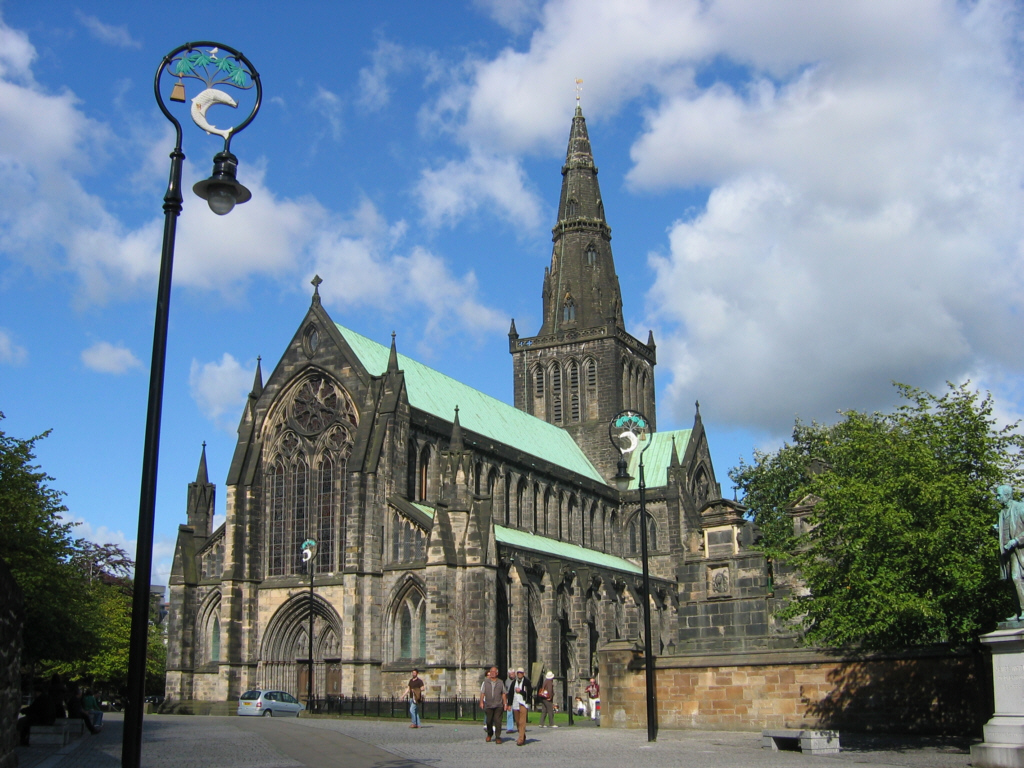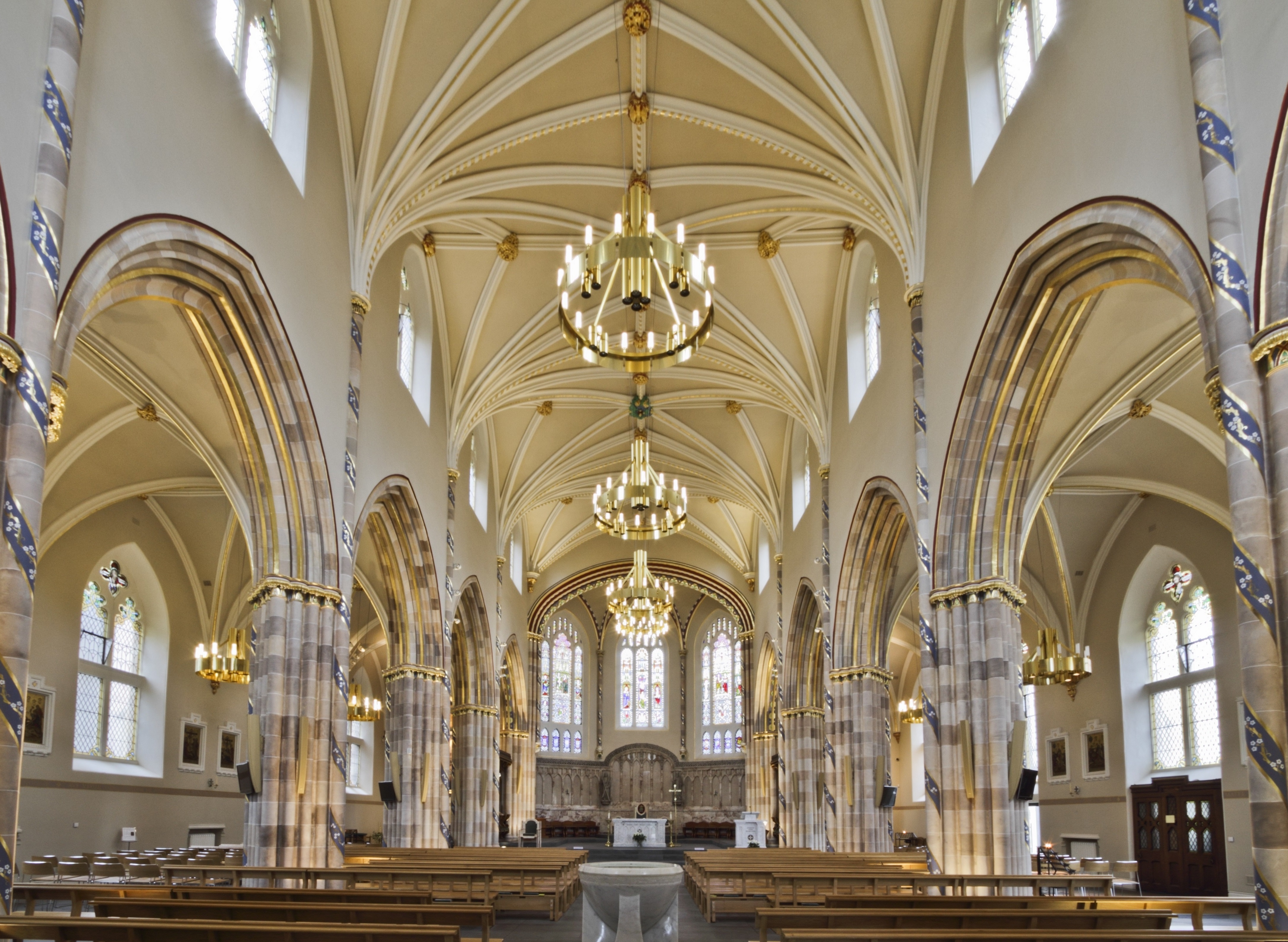|
Procathedral
A pro-cathedral or procathedral is a parish church that temporarily serves as the cathedral or co-cathedral of a diocese, or a church that has the same function in a Catholic missionary jurisdiction (such as an apostolic prefecture or apostolic administration) that is not yet entitled to a proper cathedral. A pro-cathedral is distinct from a ''proto-cathedral'', the term in the Roman Catholic Church for a former cathedral, which typically results from moving an episcopal see to another (usually new) cathedral, in the same or another city. In a broader context, the term "proto-cathedral" may refer to a church used by a bishop before the designation of a settled cathedral (or pro-cathedral). Usage Europe In Ireland, the term is used to specifically refer to St Mary's Pro-Cathedral in Dublin, the seat of the Roman Catholic archbishop of Dublin since the Anglican Reformation in Ireland, when Christ Church Cathedral and St Patrick's Cathedral became the property of the (Anglic ... [...More Info...] [...Related Items...] OR: [Wikipedia] [Google] [Baidu] |
St Mary's Pro-Cathedral
St Mary's Church ( ga, Leas-Ardeaglais Naomh Muire), known also as St Mary's Pro-Cathedral or simply the Pro-Cathedral, the Chapel in Marlborough Street or the Pro, is a pro-cathedral and is the episcopal seat of the Roman Catholic Archbishop of Dublin and Primate of Ireland. Status as "pro-cathedral" The city of Dublin possesses two cathedrals, but unusually, both belong to one church, the minority Church of Ireland, which had been the Established Church in Ireland until 1871. In contrast, the majority religion in Ireland, Roman Catholicism, has no cathedral in the Republic of Ireland's capital city and has not had one since the Protestant Reformation. As the official church, the Church of Ireland took control of most church property, including the Cathedral of the Holy Trinity (generally known as Christchurch) and St Patrick's Cathedral. These two churches had long shared the role of cathedral of Dublin, controversially at first, then under an agreement of 1300, ''Pa ... [...More Info...] [...Related Items...] OR: [Wikipedia] [Google] [Baidu] |
Anglicanism
Anglicanism is a Western Christian tradition that has developed from the practices, liturgy, and identity of the Church of England following the English Reformation, in the context of the Protestant Reformation in Europe. It is one of the largest branches of Christianity, with around 110 million adherents worldwide . Adherents of Anglicanism are called ''Anglicans''; they are also called ''Episcopalians'' in some countries. The majority of Anglicans are members of national or regional ecclesiastical provinces of the international Anglican Communion, which forms the third-largest Christian communion in the world, after the Roman Catholic Church and the Eastern Orthodox Church. These provinces are in full communion with the See of Canterbury and thus with the Archbishop of Canterbury, whom the communion refers to as its ''primus inter pares'' (Latin, 'first among equals'). The Archbishop calls the decennial Lambeth Conference, chairs the meeting of primates, and is t ... [...More Info...] [...Related Items...] OR: [Wikipedia] [Google] [Baidu] |
Church Of Scotland
The Church of Scotland ( sco, The Kirk o Scotland; gd, Eaglais na h-Alba) is the national church in Scotland. The Church of Scotland was principally shaped by John Knox, in the Reformation of 1560, when it split from the Catholic Church and established itself as a church in the reformed tradition. The church is Calvinist Presbyterian, having no head of faith or leadership group and believing that God invited the church's adherents to worship Jesus. The annual meeting of its general assembly is chaired by the Moderator of the General Assembly of the Church of Scotland. The Church of Scotland celebrates two sacraments, Baptism and the Lord's Supper, as well as five other rites, such as Confirmation and Matrimony. The church adheres to the Bible and the Westminster Confession of Faith, and is a member of the World Communion of Reformed Churches. History Presbyterian tradition, particularly that of the Church of Scotland, traces its early roots to the church foun ... [...More Info...] [...Related Items...] OR: [Wikipedia] [Google] [Baidu] |
Glasgow Cathedral
Glasgow Cathedral ( gd, Cathair-eaglais Ghlaschu) is a parish church of the Church of Scotland in Glasgow, Scotland. It is the oldest cathedral in mainland Scotland and the oldest building in Glasgow. The cathedral was the seat of the Archbishop of Glasgow, and the mother church of the Archdiocese of Glasgow and the Province of Glasgow, until the Scottish Reformation in the 16th century. Glasgow Cathedral and St Magnus Cathedral in Orkney are the only medieval cathedrals in Scotland to have survived the Reformation virtually intact. The medieval Bishop's Castle stood to the west of the cathedral until the 18th century. The cathedral is dedicated to Saint Mungo, the patron saint of Glasgow, whose tomb lies at the centre of the building's Lower Church. The first stone cathedral was dedicated in 1136, in the presence of David I. Fragments of this building have been found beneath the structure of the present cathedral, which was dedicated in 1197, although much of the present ca ... [...More Info...] [...Related Items...] OR: [Wikipedia] [Google] [Baidu] |
Archbishop Of Glasgow
The Archbishop of Glasgow is an archiepiscopal title that takes its name after the city of Glasgow in Scotland. The position and title were abolished by the Church of Scotland in 1689; and, in the Scottish Episcopal Church, it is now part of the Episcopal bishopric of Glasgow and Galloway. In the Roman Catholic Church, the title was restored by Pope Leo XIII in 1878. The present Archbishop is William Nolan, who was installed on 26 February 2022. History The Diocese of Glasgow originates in the period of the reign of David I, Prince of the Cumbrians, but the earliest attested bishops come from the 11th century, appointees of the Archbishop of York. The episcopal seat was located at Glasgow Cathedral. In 1492, the diocese was elevated to an archdiocese by Pope Innocent VIII. After the Scottish church broke its links with Rome in 1560, the archbishopric continued under the independent Scottish church until 1689 when Episcopacy in the established Church of Scotland was fin ... [...More Info...] [...Related Items...] OR: [Wikipedia] [Google] [Baidu] |
Glasgow
Glasgow ( ; sco, Glesca or ; gd, Glaschu ) is the most populous city in Scotland and the fourth-most populous city in the United Kingdom, as well as being the 27th largest city by population in Europe. In 2020, it had an estimated population of 635,640. Straddling the border between historic Lanarkshire and Renfrewshire, the city now forms the Glasgow City Council area, one of the 32 council areas of Scotland, and is governed by Glasgow City Council. It is situated on the River Clyde in the country's West Central Lowlands. Glasgow has the largest economy in Scotland and the third-highest GDP per capita of any city in the UK. Glasgow's major cultural institutions – the Burrell Collection, Kelvingrove Art Gallery and Museum, the Royal Conservatoire of Scotland, the Royal Scottish National Orchestra, Scottish Ballet and Scottish Opera – enjoy international reputations. The city was the European Capital of Culture in 1990 and is notable for its architecture, cult ... [...More Info...] [...Related Items...] OR: [Wikipedia] [Google] [Baidu] |
St Andrew's Cathedral, Glasgow
The Metropolitan Cathedral Church of Saint Andrew or Glasgow Metropolitan Cathedral is a Roman Catholic Cathedral in the city centre of Glasgow, Scotland. It is the mother church of the Roman Catholic Archdiocese of Glasgow. The cathedral, which was designed in 1814 by James Gillespie Graham in the Neo Gothic style, lies on the north bank of the River Clyde in Clyde Street. St Andrew's Cathedral is the seat of the Archbishop of Glasgow, currently William Nolan. It is dedicated to the patron saint of Scotland, Saint Andrew. History From the Scottish Reformation of 1560 until the beginning of the Catholic Emancipation process in 1791, with the Roman Catholic Relief Act of 1791 – which restored certain civil rights and freedom of worship – Roman Catholics in Glasgow had to worship covertly. By the end of the 18th century, particularly with the influx of Irish Catholic immigrants to Glasgow during the nascent stages of the Industrial Revolution, there emerged an increasing d ... [...More Info...] [...Related Items...] OR: [Wikipedia] [Google] [Baidu] |
Scottish Reformation
The Scottish Reformation was the process by which Scotland broke with the Papacy and developed a predominantly Calvinist national Kirk (church), which was strongly Presbyterian in its outlook. It was part of the wider European Protestant Reformation that took place from the sixteenth century. From the late fifteenth century the ideas of Renaissance humanism, critical of aspects of the established Catholic Church, began to reach Scotland, particularly through contacts between Scottish and continental scholars. In the earlier part of the sixteenth century, the teachings of Martin Luther began to influence Scotland. Particularly important was the work of the Lutheran Scot Patrick Hamilton, who was executed in 1528. Unlike his uncle Henry VIII in England, James V avoided major structural and theological changes to the church and used it as a source of income and for appointments for his illegitimate children and favourites. His death in 1542 left the infant Mary, Queen of Scots as ... [...More Info...] [...Related Items...] OR: [Wikipedia] [Google] [Baidu] |
St Andrew's Cathedral, St Andrews
The Cathedral of St Andrew (often referred to as St Andrews Cathedral) is a ruined cathedral in St Andrews, Fife, Scotland. It was built in 1158 and became the centre of the Medieval Catholic Church in Scotland as the seat of the Archdiocese of St Andrews and the Bishop of St Andrews, Bishops and Archbishops of St Andrews. It fell into disuse and ruin after Catholic mass was outlawed during the 16th-century Scottish Reformation. It is currently a monument in the custody of Historic Environment Scotland. The ruins indicate that the building was approximately long, and is the largest church to have been built in Scotland. History Founding and development The cathedral was founded to supply more accommodation than the older church of Saint Regulus, St. Regulus (St. Rule) afforded. This older church, located on what became the cathedral grounds, had been built in the Romanesque architecture, Romanesque style. Today, there remains the square tower, 33 metres (108 feet) high, and ... [...More Info...] [...Related Items...] OR: [Wikipedia] [Google] [Baidu] |
Archbishop Of Saint Andrews And Edinburgh
The Archbishop of St Andrews and Edinburgh is the ordinary of the Roman Catholic Archdiocese of St Andrews and Edinburgh. The archdiocese covers an area of 5,504 km2. The metropolitan see is in the City of Edinburgh where the archbishop's seat (''cathedra'') is located at the Cathedral Church of Saint Mary. The eighth and current archbishop is Leo Cushley. History After the Scottish Reformation, the Roman Catholic Church abandoned the hierarchy and for nearly a century Roman Catholics in Scotland were under the jurisdiction of the English prefects and vicars apostolic. In 1653, the Prefecture Apostolic of Scotland was established, which was elevated to the Vicariate Apostolic in 1694. On 23 July 1727, Scotland was divided into the Vicariates Apostolic of the Lowland District and the Highland District, each headed by a vicar apostolic. On 13 February 1827, Scotland was divided again into three vicariates apostolic; the Eastern District (formerly the Lowland District) ... [...More Info...] [...Related Items...] OR: [Wikipedia] [Google] [Baidu] |
Edinburgh
Edinburgh ( ; gd, Dùn Èideann ) is the capital city of Scotland and one of its 32 council areas. Historically part of the county of Midlothian (interchangeably Edinburghshire before 1921), it is located in Lothian on the southern shore of the Firth of Forth. Edinburgh is Scotland's second-most populous city, after Glasgow, and the seventh-most populous city in the United Kingdom. Recognised as the capital of Scotland since at least the 15th century, Edinburgh is the seat of the Scottish Government, the Scottish Parliament and the highest courts in Scotland. The city's Palace of Holyroodhouse is the official residence of the British monarchy in Scotland. The city has long been a centre of education, particularly in the fields of medicine, Scottish law, literature, philosophy, the sciences, and engineering. It is the second-largest financial centre in the United Kingdom, and the city's historical and cultural attractions have made it the UK's second-most visited tourist d ... [...More Info...] [...Related Items...] OR: [Wikipedia] [Google] [Baidu] |









